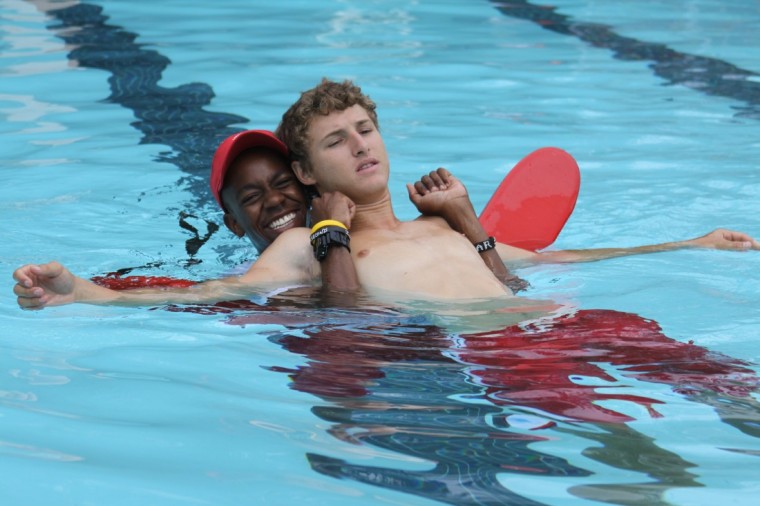A higher level lifeguard certificate from the Red Cross is the minimum requirement for the various types of lifeguard professions. Certification is earned after passing a water safety course, and annual renewals and course updates are required to maintain this certification. With a Red Cross instructor’s license, lifeguards can give swimming lessons. All types of lifeguards must be strong swimmers in the best of health and physical fitness. Various lifeguard career locations include public swimming pools, public and private athletic clubs, beaches, schools with swimming pools, community recreation centres, hotels and cruise ships.
Lifeguards in sports clubs, schools and community centres may be required to hold the Red Cross Instructor’s Certificate to provide swimming instruction and lifeguard services. In these environments, there may be several lifeguards and swimming instructors looking out for customer safety and teaching people how to swim. These positions may also include pool cleaning and maintenance, e.g. B. Adding chemicals and regularly cleaning dirt and debris from the pool area. Pool lifeguards must abide by rules such as walking on pool decks as people could slip and fall on the hard surface.
Hotel and cruise ship lifeguards are hospitable and suit people with pleasant, mature personalities, as these lifeguards actually live among their customers. A hotel lifeguard could potentially live off-site, but cruise ship lifeguards certainly cannot when they work. However, travelling on a ship with perks like top-notch dining can help make up for the lack of total privacy.
Lifeguards who work on public beaches and parks may be hired by a city’s parks committee. These types of lifeguard careers tend to be seasonal and beach and park pool lifeguards may only be hired for the summer. If there are beach closures due to a public safety decision by the Parks Committee, the hired lifeguard will not work and will not be paid. These can still be good positions for lifeguards who like to be outside in warm weather and have another income from work or who attend school the rest of the year.
Hats, t-shirts, and swimsuits or shorts are the standard work attire for all types of lifeguard careers. A lifeguard must be ready to jump in at any sign of an emergency. Lifeguard clothing may be marked in bold with the word Lifeguard. Lifeguard chairs are usually very large and positioned right at the water’s edge, allowing lifeguards to be close to swimmers and have a good view of the entire swimming area.

Also read about: Is lifeguard training hard?
How do I Become a Lifeguard?
To become a lifeguard, you should first consider whether you want to be a civilian lifeguard, such as a lifeguard, or part of a lifeguard in a military unit. If you want to become a civilian lifeguard, you should obtain any emergency medical certifications required in your area, such as cardiopulmonary resuscitation (CPR). To become an emergency rescue lifeguard, usually, as part of a government or military organization, you must affiliate with the appropriate organization in your area and qualify for a lifeguard position.
The American Lifeguard Association is offering lifeguard training near me to become a professional lifeguard. Before beginning lifeguard training, you should usually decide what type of lifeguard you want to become. If you are interested in working as a civilian lifeguard e.g. For example, if you are a lifeguard then you should search for pools, lakes and beaches in your area that require lifeguards. You can then identify the lifeguard qualifications required in your area, which may vary somewhat by area.
To become a lifeguard with a rescue unit such as the US Coast Guard or similar military organization, you must join that group and qualify for lifeguard training. This means that you must be in a good physical and mental condition to even enlist in the military. Military licensing requirements can vary from country to country, so you should contact local recruiters for specific information on these requirements. You should also contact various military departments to find out which organization offers lifeguard positions in your country.
Once you have joined the appropriate military or rescue organization in your country, you can begin lifeguard training. For example, in the US, you should consider enlisting in the US Navy and qualifying to begin training in the lifeguard program. This may be easier if you have a lifeguard background, including professional work and both CPR and first aid training to demonstrate your skills as a swimmer. Once accepted into the lifeguard training program, you must complete the full program to become a lifeguard, which can be both physically and mentally demanding.












